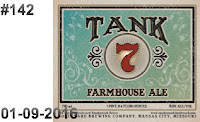 |
| Sour Kettling at 110 degrees |
Berliner Weisse is a cloudy, sour, white beer of around 3% abv. It is a regional variation on the white beer style from Northern Germany, dating back to at least the 16th century. The following produced 3.7 ABV, 3.4 ph, 120 calories, 1.037OG est. “Modern” Berliner Weisse can be produced using a three step process. Sour mash/kettle, Pasteurize and Ferment
| Mash |
150° - 60 min + 15 min boil + chil |
| 4 lbs | Pilsen Malt |
| 3 lbs | Wheat Pale Malt |
| 8.0 oz | Munich |
|
|
| Kettle Sour | ~2 days - 3.4 ph |
| 110 degrees | Anova Sous Vide Precision Cooker |
| 8.0 oz | 2 row in muslin bag |
| 1 pkgs | White labs WLP677 |
|
|
| Boil |
|
| 0.5 oz | Hallertau - Boil 60 min |
|
|
| Fermentation |
|
| 1 pkgs | Yeast - Who knows. Didn't take notes. Would be good to know now |
 |
Used bricks to lift the pot up higher.
Otherwise the pot wanted to float |
After getting scared by many articles and getting my ph low quickly, I added phosphoric and 6 tsp of lactic acid, but didn't appear to have great impact. After the production of the wort, but before pitching the culture of Lactobacillus, some brewers like to slightly lower the pH of the wort with food grade lactic acid or phosphoric acid before adding the Lactobacillus. Acidifying the wort before pitching Lactobacillus has several benefits, such as discouraging unwanted microbes that may have accidentally been introduced into the wort, and helping to prevent Lactobacillus from degrading foam proteins. The idea is to get the wort down to a pH of 4.0 - 4.4 before adding Lactobacillus.
To address issues with the depth of the tub bricks were placed on the bottom of the tub before adding the brew pot. The Anova sous vide device was attached to the side of the tub which acted as a larger vessel with water to keep the heat applied to the outside water.
The brewing pot was placed inside of a keg tub. To protect the wort a layer of plastic wrap set directly on top of the mash in the kettle to keep air away, while others purge the space above the mash with carbon dioxide. Without eliminating oxygen there is the potential for funky off-flavors and aromas can generally be avoided.
The Sous Vide was set for 110º F for approximately 2 days. Continued Sour Kettling until 3.4 ph, about 2 days. After tasting and talking with Jym F., I wish that I had let the ph continue until 3.1. The beer was just not as sour as I had hoped.
Some key notes for kettle sours
- pH: pre-acidify to 4.0-4.5 (1 mL of 88% lactic acid = .1 shift in pH for 5 G of wort)
- Temperature: variable but… 106º-120º F (41º-49º C)
- CO2 & O2: depends on lacto source but CO2 blanket is recommended
- Time: variable, but usually 18-72 hours
My biggest changes for next time?
Grist Bill
Going forward there was probably not enough wheat malt in my grist bill. A typical Berliner would have a grist bill contains 50–70% wheat malt, and the rest is pale barley malt. Until the middle of the last century, breweries also used smoked wheat malt in addition to regular wheat malt. Once one brewery began using unsmoked wheat malt, however, consumers seemed to prefer it, and so the other breweries followed as well.
The munich malt could also be removed.
ph
I would let the ph go lower next time. I was worried about being too sour. This was definitely not the case.
Carbonation
After tasting, I am going to increase the carbonation.
Additional Sources of Information
- Berliner Weisse - From Past to Present. Retrieved May 07, 2016, from https://www.morebeer.com/articles/berliner_weisse
- Milk The Funk Wiki. (n.d.). Retrieved March 15, 2016, from http://www.milkthefunk.com/wiki/
- Sour Beer Blending. (2016). Retrieved June 07, 2016, from http://sourbeerblog.com/sour-beer-blending/



















